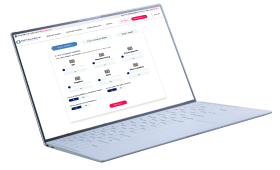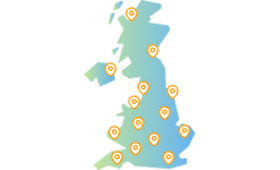
Understand your company's position and learn more about the options available
Require Immediate Support? Free Director Helpline: 0800 644 6080
Free Director Helpline: 0800 644 6080
Updated:
A limited company is classed as its own legal entity; this means it is responsible for any liabilities it accrues, and likewise, it is the legal owner of all its assets. In real terms this means that company directors cannot use company assets – including cash at bank – as though they belonged to the director personally. Any money extracted from the business must be done through the appropriate channels such as via a salary or dividend payment.
The limited company structure means your business is a separate entity from yourself as an individual in law, and unlike sole trader businesses, its assets belong to the company rather than you personally.
This clear separation means that, in most instances, you are only liable for the amount of money you have invested in the company rather than any and all the debts it accrues.
In contrast, sole traders face unlimited liability if their business becomes insolvent. There is no legal separation between the business and its owner with regard to assets, which places their home at risk if the business declines and becomes insolvent.
Free 60 Second Test
For Ltd Company Directors
What are you looking to do?
Choose below:
Business assets are those which are purchased primarily for use in the business and for its ongoing activities. They can be broken down into various categories and subcategories.
Initially, they are identified as either tangible or intangible assets:
Business assets can be further subdivided into those that convert quickly into cash, called current assets, and fixed assets which are those that are not as easily converted into cash.
“Called for help with closing non-trading companies and Chelsea advised me on what to do and instead of taking advantage as others would by taking on the case and charging loads. She gave me a solution that would cost £20. Very pleased with the service and thankful for Chelsea’s advice.”
AB
Company shareholders own the business, but not the assets held within it. If you are the shareholder of a company, therefore, you do not own your company’s assets – they are owned by the company due to its status as its own separate legal entity.
If you purchase assets for your company with personal funds, which is often the case when a new business is set up, you will transfer ownership of the assets to the company and account for this in your books. By using personal funds to buy company assets you are investing your own money in the business and the company then, technically, owes you this sum back.
UK’s number one for director advice
We handle more corporate insolvency appointments than any other UK firm; demonstrating our commitment to helping directors and business owners in financial distress.
The team are available now - 0800 644 6080
Get a Quote Find Your Nearest Office
When you start a business, it is also common to transfer personally-owned assets into the company for use by the business. When doing so, you need to determine what the current market value is for each asset, taking into account its age, condition, and other factors.
Assets need to be itemised on an invoice prior to transferring the invoice total from your company bank account to your personal account. The business’ books should be updated accordingly, and if you have the original receipts it is advisable to attach them to the invoice as supporting evidence in the event that they are needed later.
If you close down a limited company that is solvent, via Members’ Voluntary Liquidation (MVL) or dissolution, and there are assets remaining in the business once creditors have been paid, they are converted into cash for the benefit of shareholders.
If the company is not liquidated through the formal MVL process, but is dissolved by the directors, it needs to dispose of all assets prior to making the application for dissolution. If this does not happen, the assets can become property of the Crown – known as ‘bona vacantia.’
Although there is a clear line drawn regarding the ownership of business assets where a limited company is concerned, there are other elements you may need to consider. The tax implications are just one if you are closing down your business and thinking about purchasing any of the assets yourself.
If your company is struggling with unmanageable debts, squeezed cash flow, or an uncertain future, you are far from alone. We speak to company directors just like you every single day, and we are here to give you the help and advice you need.
Call our team today on 0800 644 6080
If you would like more information on the ownership of business assets, how to account for them in your books, and where you stand in legal terms if you are transferring asset ownership, our experts at Real Business Rescue can help.
We will provide tailored advice and guidance, and ensure you understand your legal position as a director. Please contact one of the team to arrange a free same-day consultation - we operate an extensive network of offices around the country so you are never far away from professional assistance.
Still unsure whether liquidation is right for your company? Don't worry, the experts at Real Business Rescue are here to help. Our licensed insolvency practitioners will take the time to understand the problems your company is facing before recommending the best course of action going forward based on your own unique circumstances.

Complete the below to get in touch
For Ltd Company Directors
What are you looking to do?
Choose below:
We provide free confidential advice with absolutely no obligation.
Our expert and non-judgemental team are ready to assist directors and stakeholders today.

Understand your company's position and learn more about the options available

Find your nearest office - we have more than 100 across the UK. Remote Video Meetings are also available.

Free, confidential, and trusted advice for company directors across the UK.